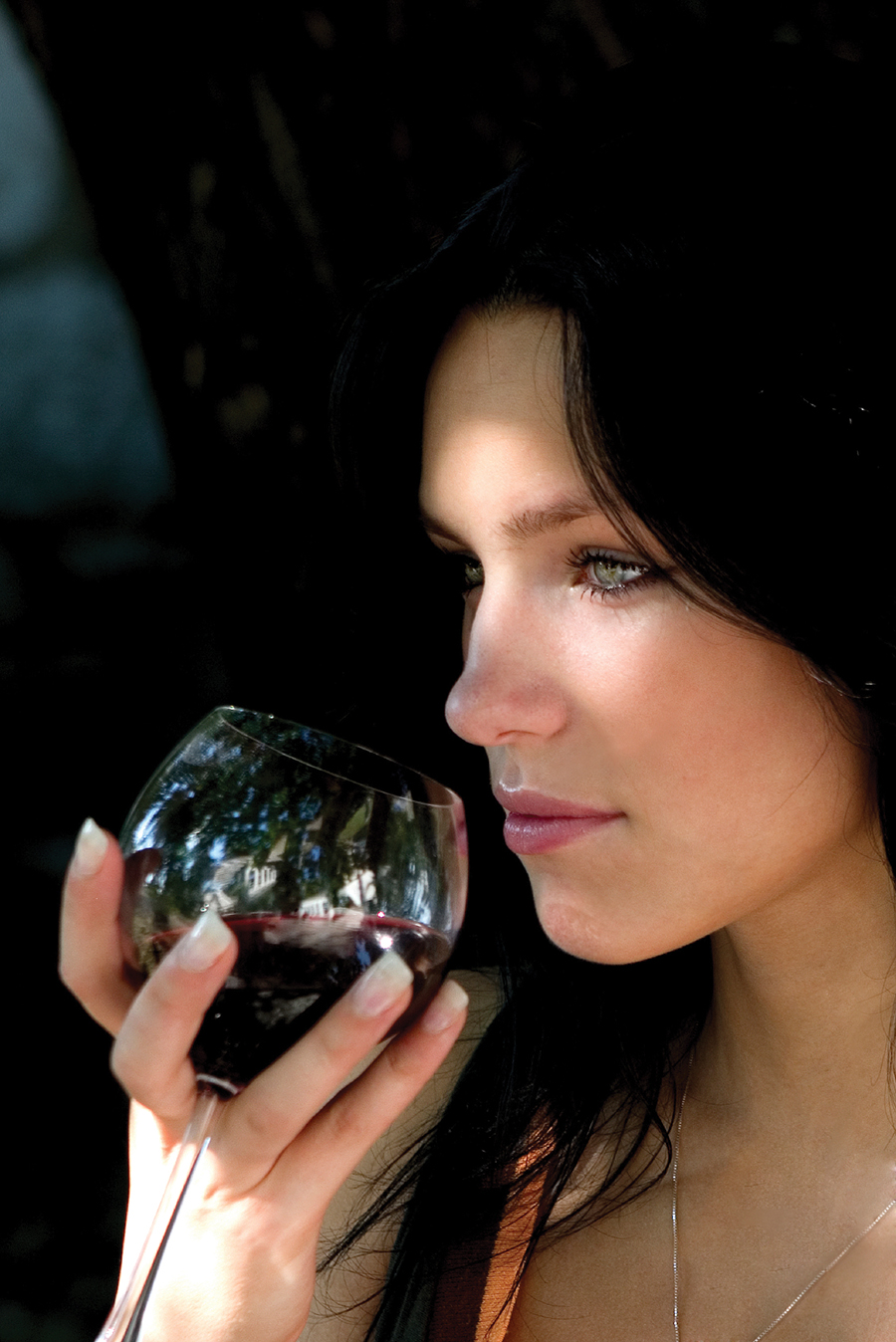It’s as simple as understanding dry, sweet and fruity.
By Matthew DeBord
HQ 59 | AUTUMN 2006
If it were up to me, wine tasting would be banned. I think it’s the number one impediment to people actually drinking wine. Why? Because many newcomers to wine assume that tasting is an esoteric art, capable of being practiced on by a select few. They’ve barely started drinking wine and they already feel intimidated.
Intimidation is the death of pleasure, and wine drinking is most assuredly meant to be pleasurable.
Okay, I’m not totally serious, but you get my point. It’s kind of hard to get around tasting wine. If you don’t get at least a slight handle on what tasting is all about, you’ll never be able to properly decide if a wine is or isn’t for you.
But tasting doesn’t have to be complicated. In fact, I believe it’s best when it’s treated as an undertaking of absolute simplicity, and I’ve tasted thousands of wines professionally. There are only a few things you need to know:
There are basically two main wine “tastes,” for both red and whites: dry and sweet. “Dry” just means “not sweet.” The other, “sweet,” is more intuitively explained: sweet wines usually contain something called “residual sugar,” meaning that not all the natural sugar in the grapes was fermented out (sugar in the grapes is what, along with yeast, drives the transformation of juice into wine). Most folks these days favor dry wines, such as Merlot and Chardonnay. Sweet wines include Riesling and many dessert wines, as well as some sparkling wines.
The most important taste in wine is that of the fruit. If a wine doesn’t taste fruity, it’s not a good wine.
Once you’ve got dry, sweet and fruity down, you’re good to go. It’s that simple.
I recommend heading over to the wine or grocery store and picking up one bottle of Cabernet Sauvignon, from anywhere, and one bottle of Chardonnay, also from anywhere. Don’t spend more than $15. With these two wines, you will teach yourself to taste.
Fancy glasses aren’t necessary. If you have some clear, crystal stemware, wonderful. But plain old juice glasses will suffice. Pour the wines. They should be relatively clear. Sniff ’em. They should smell clean and fresh. You might notice some woody or smoky aromas, but they should be pleasant, not funky. If the wine smells funky, it’s a bad wine.
You can give the wines a little swirl, if you like. Again, it’s not necessary. But it does unlock some of a wine’s aromas. Now taste. Just take a decent swig. You may have seen people who profess a knowledge of wine begin to slurp at their wine at this point, but you don’t have to do that. The slurping can intensify the way that your senses of smell and taste interpret a wine, but merely putting the wine in your mouth achieves that well enough.
Here’s where the fun begins. You are trying to detect the flavor of the fruit. Cabernet Sauvignon and Chardonnay will have very different fruit flavors: blackberries and chocolate and stuff for the former; pineapples and mangoes and peaches and vanilla for the latter. There’s only one essential thing you need to seek: That the fruit be delicious and pleasing. If the fruit tastes weird, that equals bad wine. My theory is that most people, based on a lifetime of crunching apples and consuming oranges and popping blueberries and strawberries, have a pretty solid idea of what fruit is supposed to taste like. Follow that instinct.
Seeking fruit when tasting wine will serve you well as you work your way up the quality ladder. It doesn’t matter what kind of wine you’re dealing with — grand old Bordeaux, dowager red Burgundy, racy New Zealand Sauvignon Blanc, full-bore California Zinfandel — they must all showcase rich, yummy fruit in order to be considered worthwhile. Even if you’re talking about a wine that’s been aging for decades. There will be a different richness to the fruit, but the wines that age best are wines that have enough fruit to balance the elements that allow them to hang in there for the long haul. Fruit may fade, but it should never disappear.
So there you have it, the ironclad rule for tasting all wines: Seek fruit!
Once you have the fruit thing down, you can venture into deeper water and begin to evaluate the wines you buy in terms of structure, finish and so on. But always remember, if you don’t like the fruit, you probably will not find anything much to like in the wine. No matter how hard you try.
A good way to hone your palate, as they say, if to start a tasting group. Find some friends who also like wine, then set up a regular tasting night. Everyone brings a bottle, somebody cooks dinner, the group has a terrific time. Note however that it’s advisable to provide spit buckets, as tasting half a dozen wines among half a dozen friends without spitting some out is likely to lead to tipsiness, which doesn’t get along well with driving. No crime in spitting out some wine when tasting. Truth is, spitting can keep your palate fresher.
It’s nice to have some crackers, cold cuts and water on hand for the tasting phase. Wine likes food. Sample the wines one at a time, comparing impressions. Take notes if you feel like it. Those who read wine magazines and newsletters may even want to try their hand at scoring wines, from say 70 to 100 points. A “secretary” can be appointed for the group to keep track of everything, so that over time the group will amass its own buying guide/database of wines.
Pay careful attention to the different tastes discovered by men versus women. Believe it or not, the sexes seem to be tuned to taste differently. Men can learn a lot from women, and vice versa. The most important aspect of a thriving wine-tasting group, however, is that all its members enter into the process in a spirit of collaboration and fun.
Once the tasting is concluded, play wine-and-food pairing with dinner. Take what’s being served and try to match it up with the wines that were tasted earlier. By doing this, the members of the group will learn how the specific tastes in wines interact dynamically with flavors in foods. There can be some real surprises, such as discovering that rich, robust reds can pair with some fish, or that lighter white wines taste good with barbecue.
The upshot of learning to taste is to put aside the notion that taste is completely subjective. It isn’t. But that isn’t a bad thing. Because every wine worth drinking should taste great, and that’s something everyone should agree on.





